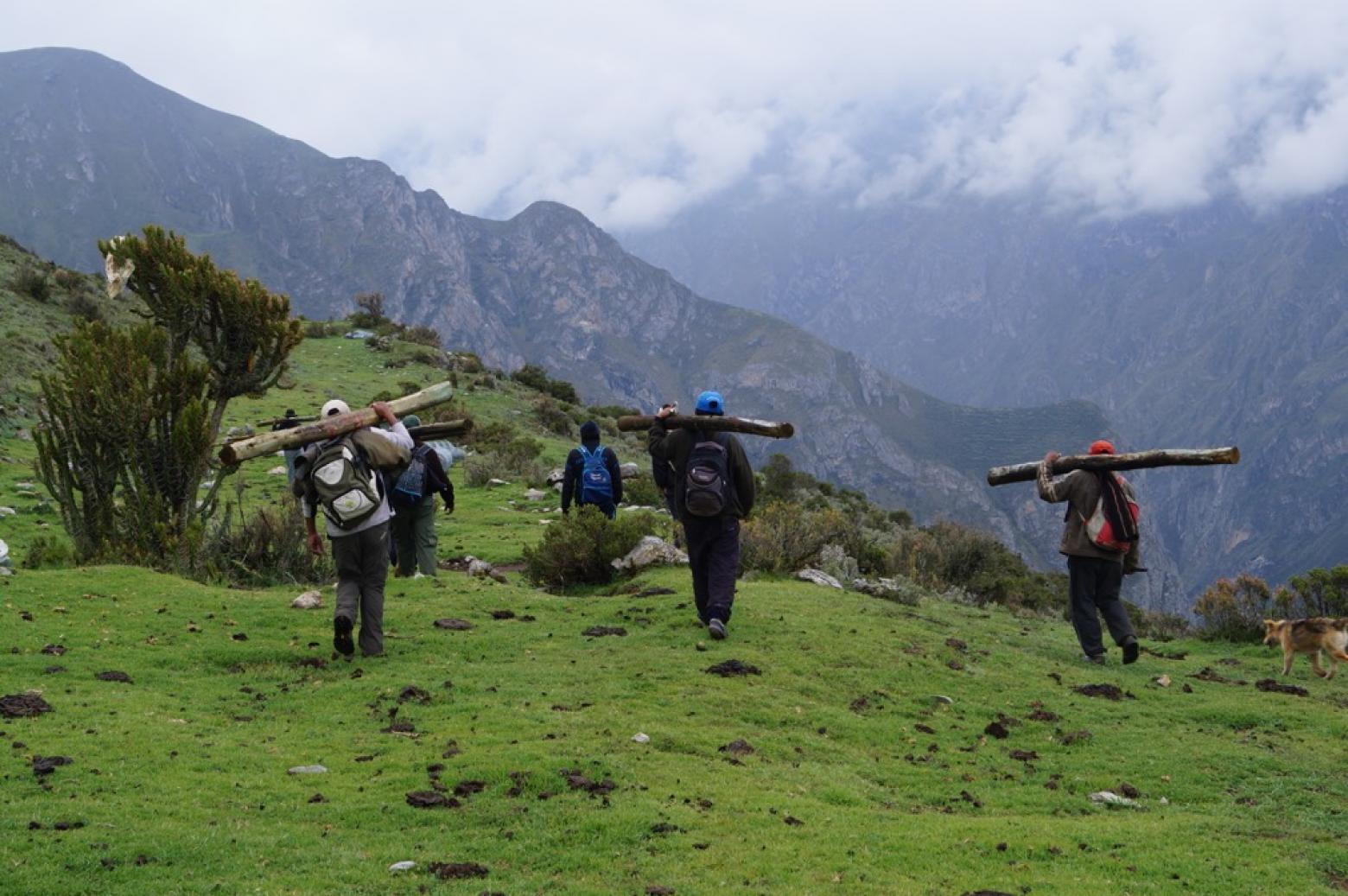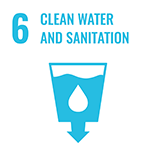Restoring ancient water management systems in the high Andes as an adaptation to climate change – Miraflores, Peru

Summary
The solution highlights an Ecosystem based Adaptation (EbA) measure that was implemented in Miraflores, Peru. The solution was implemented by the community of Miraflores and Instituto de Montaña in partnership with the Nor Yauyos Cochas Landscape Reserve and IUCN.
This adaptation solution combined traditional (indigenous), local knowledge with the latest science and comprised three components: (1) Strengthening community organizations and institutions, (2) Strengthening local capacities and knowledge and (3) Combining green and grey infrastructure. Working with conservationists, engineers and anthropologists, Miraflores community members decided to refurbish an ancient water management system designed by their ancestors and dating back as far as 700 years. This renovated system is a hybrid of grey (constructed) and green (from nature) infrastructure that makes the most of ancient engineering and modern science. We were able to restore water flow to native grasslands/pastures and improve livestock and pastureland management–a key adaptation to climate change.
Overview
- Location:
- Implementation sites:
-
- Single country
- Single location
- Mountain region:
-
Andes
- Province:
-
- Lima Region, Yauyos Province, Junín Region, Jauja Province
- Site locations:
-
Nor Yauyos-Cochas Landscape Reserve, Miraflores District
- Solution scale:
- Ecosystem type(s):
- Solution type(s):
- Sector(s):
- Climate impact(s) addressed:
- Other climate impact(s) addressed:
-
- Glacial Retreat, Land and Forest Degradation
- Climate impact time-scale(s):
- Main benefit associated with the solution:
- Co-benefit(s) associated with the solution implementation:
- Sendai targets:
-
Solution details
Main beneficiaries & outcomes
Main beneficiaries
- Direct: 80 families (approx. 400 people) in the community of Miraflores.
- Indirect: Populations living in the middle and lower part of the watershed.
Key outcomes
The area that protects wetlands, lagoons and ancestral dikes in Yanacancha was expanded from 3 to 7 ha. The vegetation cover in the fenced area shows a trend of improvement from 69% to 90%. The pipeline repair increased the water supply, availability and distribution to larger areas. The community of Miraflores agreed to preserve and recover 160 ha of native pasture for eight months annually, during the dry season. The community developed its “pasture and water management plan” in a participatory manner. This plan included long-term activities and identified conservation objectives that are aligned with the objectives in the Nor Yauyos-Cochas Landscape Reserve’s master plan. A space for dialogue between various groups—peasant/indigenous communities, governments and government agencies, academia and research, NGOs and the private sector—was created to foster synergies for financing and technical support for sustainably managing grassland ecosystems (with an emphasis on the pasture and water management plan).
Planning and implementation
Building block 1: Strengthening community organization and institutions
A pasture and water management plan was developed to promote integrated management of pastures, water and livestock resources throughout the communal territory of Miraflores. The goal was to strengthen community organization so that water could be distributed more effectively and grazing areas could benefit from improved rotation. The process to develop the management plan was facilitated by Instituto de Montaña using a methodology to strengthen capacities, stimulating collective and social practices within the community. The plan is defined as a set of ideas that emerge from a given population, based on their own perspectives. This is achieved by means of an in-depth process of analysis. The management plan can also serve as a tool for local management in the medium term.
According to the keen interest of this community, analysis and planning have focused on grasslands and water. The plan also encouraged the community to establish a committee to maintain and operate the renovated water infrastructure so that the water continues to flow and grasslands continue to be irrigated.
Building block 2: Strengthening local capacities and knowledge
The main goal of the capacity building and local knowledge component was to provide technical knowledge for managing and conserving water, natural pastures, and livestock. The team’s focus was on informing community members and park rangers through evaluation workshops and training sessions on topics such as pasture fencing, water management and water distribution. A 3-D model of the Miraflores community was developed in a participatory way to facilitate planning for managing pastures and water in the communal territory. Information was gathered during participatory rural appraisals. These appraisals include specific studies focused on water, pastures, archeology, social organization, agricultural and livestock productivity.
Building block 3: Improvement of gray-green water and grassland management infrastructure
In the infrastructure component, the following actions were carried out:
- expanding the fenced area of the Yanacancha wetland,
- repairing the Yanacancha water pipeline: Curiuna to Huaquis segment.
- sectorization (by fencing) from Curiuna to Tuntinia,
- repairing and constructing five watering places (Curiuna, Wayacaña, Pampalpa, Colulume and Tuntinia), and
- constructing a “water cave” at the entrance to Huaquis.
As the team implemented this component, the community contributed their labor through communal tasks. The community was also responsible for transferring construction materials to this remote area.
Finance
This program is part of the International Climate Initiative (IKI). The Federal Ministry for the Environment, Nature Conservation and Nuclear Safety (BMU) supports this initiative on the basis of a decision adopted by the German Bundestag.
Our Mountain EbA Program is led by Instituto de Montaña and implemented jointly with the International Union for the Conservation of Nature (IUCN) and country partners over the period 2017-2022.
Innovation
N/A
Long term project sustainability and maintenance
The building blocks contribute to the initiative’s sustainability. The technology-based infrastructure combined with measures to strengthen technical and organizational capacities form the foundation for the measure’s sustainable implementation and maintenance.






Comments
There is no content